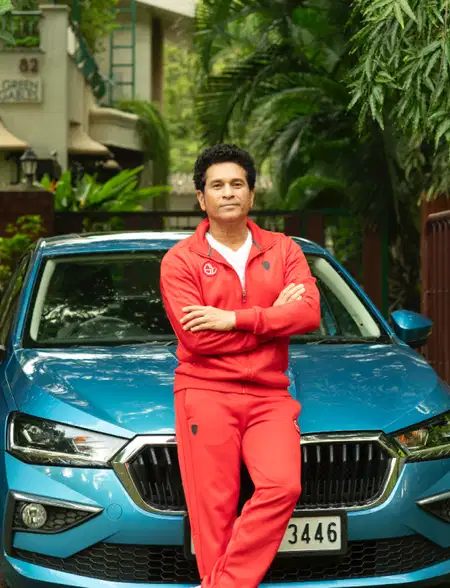Necessity is the mother of inventions they say. To satisfy the necessity for more performance, mileage, and efficiency, Honda has been at the forefront of pushing innovation and technology. This drive lead them to build an engine that provides both a high power output as well as hassle-free drivability over the entire revolution range. The result was Honda’s pioneer innovation, the VTEC or the Variable Valve Timing & Lift Electronic Control system. In this article, we will have a look at what makes the VTEC engine, a remarkable piece of innovation since the late 1980s.
The History of the VTEC Engine
The herculean task of developing a smarter engine began when Honda’s R&D achieved the first milestone with the REV (Revolution-modulated valve control) valve pausing mechanism. The system was developed in such a way that it could forcibly stop multiple valves when needed to optimize airflow and achieve a stable idling and increased smoothness for low to medium engine operation. This new innovation was first introduced in the Honda CBR400F motorbike in 1983. And with the 2-wheelers substantially enhanced, Honda set its foot to revolutionize the four-wheeled drive.
Used Honda Cars on Spinny

From the REV used in motorcycle engines, Honda developed the DOHC (Double Overhead Camshaft) VTEC system for automobiles. The DOHC VTEC improved the volumetric efficiency of a four-stroke internal combustion engine, resulting in higher performance at high RPM, and lower fuel consumption at low RPM. Since its first introduction in 1989, the VTEC technology has completely changed the way the world looked at engines.

The VTEC engine debuted in India in 2000 and it has enjoyed a legacy of over two decades. Over the years many refurbishments were carried in the VTEC system with the most crucial one being i-VTEC (where “i” stood for intelligent). This technology blended the VTC (Variable Timing Control) with the VTEC mechanisms to produce a highly effective and superior performance.
How does the DOHC engine work
For any die-hard Honda fan, the term i-VTEC or VTEC would be synonymous to top-notch performance and fuel efficiency. If you are curious to know how the VTEC does its magic, you are at the right place. But before knowing how the VTEC works, let’s have a look at how a basic DOHC engine functions.
Petrol powered engines require four things to generate power. These include air, fuel, compression, and spark. But to understand the VTEC system, we’ll mainly focus on the air part of the equation.
In an engine, the camshaft is a long rod that sits above the cylinder and the piston. The job of a camshaft is to make the valves on an engine’s cylinder head open and close at the right times. Each cylinder has valves for letting fuel/air mixtures in and letting spent waste gases out. The timing of when these valves open and close is very important. That timing is contained in the camshafts, which are driven either by a timing chain or a timing belt.
Placed upon the camshafts are raised points known as “lobes”. As the camshaft rotates, pushes the valves to open and close via the rocker arms. When the pointy part of the lobe swings around, it opens the valve, and when the lobe swings past, the valve gets closed by a spring. Larger lobes, therefore, are capable of opening the valves further than smaller ones.

Quite a few variables control how an engine produces the power needed. More the air intake in the engine, the more power it generates, thanks to the accelerated combustion. However, the process of opening and closing the valves works well at low RPM, but as the engine picks up speed the efficient performance begins to suffer. This is where Honda’s VTEC engine kicks in.
The Honda VTEC Revolution
Now that you have a fair idea of how a basic DOHC engine works, we know that the camshaft controls the valve opening, which at lower rpm the makes the valves open for a sufficient duration to let enough air fuel mixture inside the engine, but, at higher RPM opens and closes the valves quickly in a short duration thereby affecting the amount of air fuel mixture entering the engine. Thus, the necessity of making the valves open for a longer time to supply sufficient air fuel mixture at higher RPM led to the development of the VTEC or i-VTEC technology.
Camshafts, Valves, and VTEC
While in a traditional engine, the camshaft that opens and closes the valves has lobes which are all of the same sizes. In comparison, however, Honda’s VTEC engine is equipped with camshafts that have different sized lobes: Two standard-sized outer lobes and a larger centre lobe. At lower rpm, only the outer lobes are controlling the valves. As the engine begins to spin more quickly, the centre lobe takes over and the valves open sooner and close later, which results in a sudden burst of speed and better performance, which some of us often refer to as the “VTEC kicking In”.

Thus, the VTEC is responsible for switching between fuel-saving operating mode to performance operating mode. This is done by switching between a smaller lobe profile at low engine speeds for better fuel consumption and leaner fuel burning, and a larger lobe profile at higher speeds to achieve speeding up the valve which allows for a further and longer valve opening time and hence the desired power. This switch from the low profile cams too the high profile cams is done via a locking pin which connects the two independent cam lobes at certain engine speeds.
From VTEC to i-VTEC
To continue evolving the VTEC technology for the needs of the customer, Honda developed the i-VTEC system. The “i” represents the intelligent VTEC system and is an innovation that is coupled with Honda’s latest four cylinder petrol engines. The ‘intelligent’ combustion control technologies give outstanding fuel economy, cleaner emissions and reduced weight along with high output at all speed ranges. The design cleverly combines the highly renowned VTEC system as explained above with the Variable Timing Control Technology (VTC).

With VTC blended, the i-VTEC can advance and retard the inlet valve opening by altering the phasing of the inlet camshaft to best match the engine load at any given moment. The two systems work in unison under the close control of the engine management system which ultimately delivers a better, more powerful, efficient and cleaner fuel consumption. The i-VTEC technology as an innovation offers the highest level of flexibility since it is able to fully maximize engine potential in any circumstance. In short Honda’s i-VTEC technology gives us the best in vehicle performance.
Honda i-VTEC in India
The VTEC innovation brought by Honda has not only revolutionized engines around the globe but has also helped Honda become one of the most popular automobile manufacturers in India. The journey of the VTEC engine started off in 2000 when Honda introduced the second generation Honda City with a 1.5-litre VTEC petrol engine, which could deliver 110 bhp of power and over 140 Nm of peak torque. In the early 2000s, these numbers were a big deal in India and displayed Honda’s capabilities in full glory. Even with those numbers, what actually attracted consumers toward the power-packed VTEC units was their impressive mileage of over 16 kmpl.

Both the VTEC and the Honda City were very well received across the nation, and since then, neither has Honda looked back, nor has the VTEC. Following the massive popularity of the Honda City, Honda decided to equip the VTEC on cars like the Honda Civic, CR-V, WR-V, and Accord which substantially contributed towards their huge success in India. In 2008, Honda brought the i-VTEC engine in India, again with the Honda City, which further established the company’s stronghold in India. Currently, the entire Honda lineup is equipped with Honda’s most advanced i-VTEC engines.
As one of India’s top 5 car manufacturers, Honda has surely left a mark not only in the Indian automobile industry but also in the hearts of hardcore Honda lovers. And the credit for delivering such all-round performance surely goes to the heart of Honda, the i-VTEC engines.
FAQs about Honda i-VTEC
What is the mileage of Honda i-VTEC petrol engine?
The ARAI-certified mileage for Honda i-VTEC petrol engines is in the range of 16-18 kmpl. In real world usage, Honda cars with -VTEC are able to offer mileage figures close to ARAI-certified figures.
Does Honda i-VTEC add more power?
Honda i-VTEC petrol engines do not add more power or torque while you drive. Instead, the i-VTEC technology ensures that the car is able to switch between economy and performance modes when required.
What Honda cars in India are equipped with Honda i-VTEC petrol engines?
Every car in Honda’s current lineup is equipped with Honda i-VTEC petrol engines. This includes the new Honda City, Honda Jazz, Honda WR-V, and Honda Amaze.
What is the difference between VTEC and i-VTEC?
Both VTEC and i-VTEC engines are essentially the same. Where the i-VTEC technology differs is with the inclusion of the VTC, which further improves the fuel economy and performance of the engine.
Important Links
7 Seater Cars | Best Mileage Cars | Used Cars In Bangalore | Used Cars In Delhi | Hybrid Cars in India | Sunroof Cars | Used Cars In Gurgaon | Used Cars In Hyderabad | Used Cars In Noida | Used Cars In Pune | CNG Cars in India | Jeeps in India | Used Cars In Mumbai | Used Cars In Ahmedabad | Types of Cars | Car Brands in India | Used Cars In Chennai | Used Cars In Kolkata | Used Cars in Lucknow | Automatic Cars in India | Luxury Cars in India | Used Cars in Chandigarh | Used Cars in Coimbatore | Used Cars in Indore | Used Cars in Jaipur



 ne big family!
ne big family!
Thank you For Sharing Very Useful Infomation.